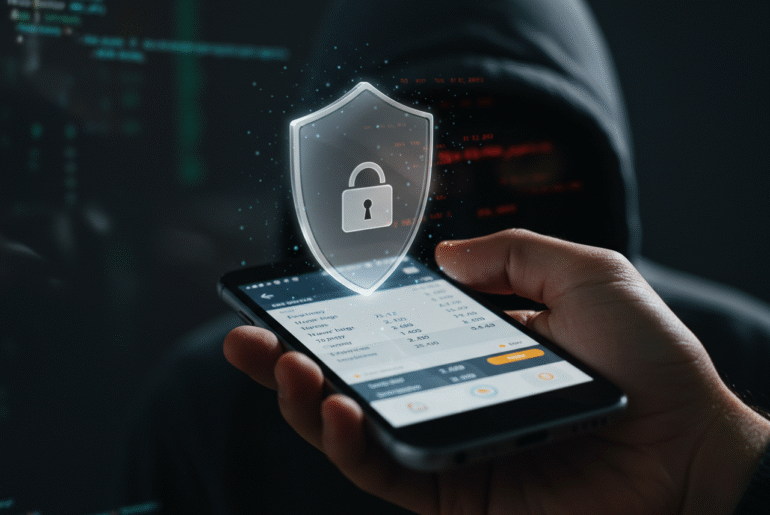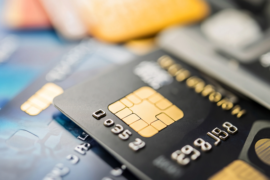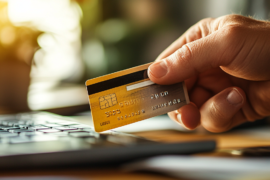This article may contain references to products or services from one or more of our advertisers or partners. We may receive compensation when you click on links to those products or services. Nonetheless, our opinions are our own.
The information presented in this article is accurate to the best of our knowledge at the time of publication. However, information is subject to change, and no guarantees are made about the continued accuracy or completeness of this content after its publication date.
Six Ways to Secure Your Bank Account
Cybersecurity threats continue to grow in frequency and sophistication, and financial accounts remain a primary target for malicious actors. Hackers use deceptive tactics, advanced malware, and social engineering techniques to infiltrate accounts, often without immediate detection. Fortunately, there are effective defenses available that don’t require technical expertise.
Recognizing Common Tactics Used by Cybercriminals
A foundational defense begins with awareness. Cybercriminals often succeed by exploiting user behavior rather than system vulnerabilities. Recognize these methods to better safeguard your financial credentials:
- Phishing attempts often appear as legitimate communication from trusted institutions, but seek to extract login credentials or sensitive data
- Malicious software can quietly record keystrokes, intercept logins, or grant unauthorized access to banking sessions
- Public Wi-Fi networks, particularly those that are unencrypted or open, may expose account activity to third parties monitoring traffic
Regular monitoring of transaction histories and account activity remains one of the most effective early warning systems.
Not all breaches result in immediate financial loss. Some begin with reconnaissance or testing security boundaries or gathering login information. These signs may indicate suspicious activity:
- Unrecognized transactions, regardless of amount
- Notifications of login attempts from unknown locations or devices
- Changes to security settings or contact details that were not initiated
- Repeated failed login attempts
| Indicator | Recommended Action |
|---|---|
| Unauthorized charge | Notify your bank and initiate a fraud claim |
| Locked account access | Reset credentials and verify contact info |
| Unexpected security alert | Avoid interacting; report and investigate |
Remaining observant to these warning signs may prevent more significant intrusions.
Elevating Password Security Standards
 Passwords continue to serve as the foundation of account protection. Yet many remain vulnerable due to predictable patterns or reuse across platforms. Improve security posture through the following measures:
Passwords continue to serve as the foundation of account protection. Yet many remain vulnerable due to predictable patterns or reuse across platforms. Improve security posture through the following measures:
- Choose passwords that exceed 12 characters and avoid personal identifiers
- Combine uppercase and lowercase letters, numbers, and symbols for increased complexity
- Use a password manager to create and store secure credentials without memorization
- Avoid reusing passwords, especially across banking, email, and e-commerce platforms
- Enable periodic password updates as part of routine digital hygiene
Implementing Multi-Layered Authentication
Two-factor authentication (2FA) offers a substantial barrier to unauthorized access. When correctly implemented, it neutralizes most password-only compromises.
- Opt for authenticator apps rather than SMS-based verification, as the latter may be intercepted
- When available, use biometrics or physical security keys for added assurance
- Securely store backup codes in case of device loss
- Extend 2FA to associated accounts especially email and cloud storage services connected to banking
| Authentication Method | Protection Level | Ease of Use |
|---|---|---|
| SMS verification | Moderate | Convenient, but less secure |
| Authenticator applications | Strong | Secure and reliable |
| Physical security keys | Very strong | Highly secure, requires device |
Layered verification methods reduce the likelihood of successful intrusions, even with compromised credentials.
Maintaining Oversight of Account Activity
Passive security measures are not sufficient on their own. Active engagement with account records improves the likelihood of detecting fraud early.
- Review bank statements and transaction logs regularly
- Enable account alerts for large transactions, logins, or profile changes
- Track changes in contact information associated with your account
- Consider using financial monitoring tools that provide unified alerts across multiple institutions
| Anomaly | Meaning |
|---|---|
| Unknown recurring charge | Possible subscription fraud |
| Changed email or phone number | Attempt to intercept communications |
| Excessive login failures | Indicator of brute-force or bot activity |
Vigilance is often the strongest deterrent against sustained fraudulent activity.
Staying Informed About Emerging Threats
Digital threats evolve constantly, with scammers adapting to user habits and technological shifts. Maintaining awareness of current trends allows for faster response and adaptation.
- Follow updates from financial institutions regarding common fraud schemes
- Avoid responding to unsolicited messages, especially those requesting urgent action or sensitive information
- Be cautious of offers requiring login credentials or payment details
- When in doubt, contact financial institutions directly using verified channels
Enable fraud alerts through your banking institution for immediate notification of unusual behavior. Regular awareness training and internal caution often prove more effective than technical tools alone.
Voted "Best Overall Budgeting App" by Forbes and WSJ
Monarch Money helps you budget, track spending, set goals, and plan your financial future—all in one app.
Get 50% OFF your first year with code MONARCHVIP
Frequently Asked Questions
Why is securing a bank account so important?
Bank accounts provide direct access to personal funds. A successful breach may result in theft, identity exposure, or account suspension, all of which can have lasting effects.
What should be the first protective step?
Implement unique, complex passwords and activate two-factor authentication. These provide immediate improvements in access control.
How can phishing attempts be spotted?
Look for generic greetings, grammar errors, and mismatched sender addresses. Official institutions rarely request sensitive information via email.
What action should be taken if an account is compromised?
Immediately report the incident to the bank, freeze the account, review all recent transactions, and update login information.
Can public Wi-Fi endanger online banking?
Yes. Open networks expose transmitted data to anyone monitoring that connection. Avoid banking activity unless connected through a private, secure network.

Reviewed and edited by Albert Fang.
See a typo or want to suggest an edit/revision to the content? Use the contact us form to provide feedback.
At FangWallet, we value editorial integrity and open collaboration in curating quality content for readers to enjoy. Much appreciated for the assist.
Did you like our article and find it insightful? We encourage sharing the article link with family and friends to benefit as well - better yet, sharing on social media. Thank you for the support! 🍉
Article Title: Protect Your Bank Account from Hackers with These 6 Steps
https://fangwallet.com/2025/06/02/bank-account-security/The FangWallet Promise
FangWallet is an editorially independent resource - founded on breaking down challenging financial concepts for anyone to understand since 2014. While we adhere to editorial integrity, note that this post may contain references to products from our partners.
The FangWallet promise is always to have your best interest in mind and be transparent and honest about the financial picture.
Become an Insider

Subscribe to get a free daily budget planner printable to help get your money on track!
Make passive money the right way. No spam.
Editorial Disclaimer: The editorial content on this page is not provided by any of the companies mentioned. The opinions expressed here are the author's alone.
The content of this website is for informational purposes only and does not represent investment advice, or an offer or solicitation to buy or sell any security, investment, or product. Investors are encouraged to do their own due diligence, and, if necessary, consult professional advising before making any investment decisions. Investing involves a high degree of risk, and financial losses may occur including the potential loss of principal.
Source Citation References:
+ Inspo
There are no additional citations or references to note for this article at this time.












































